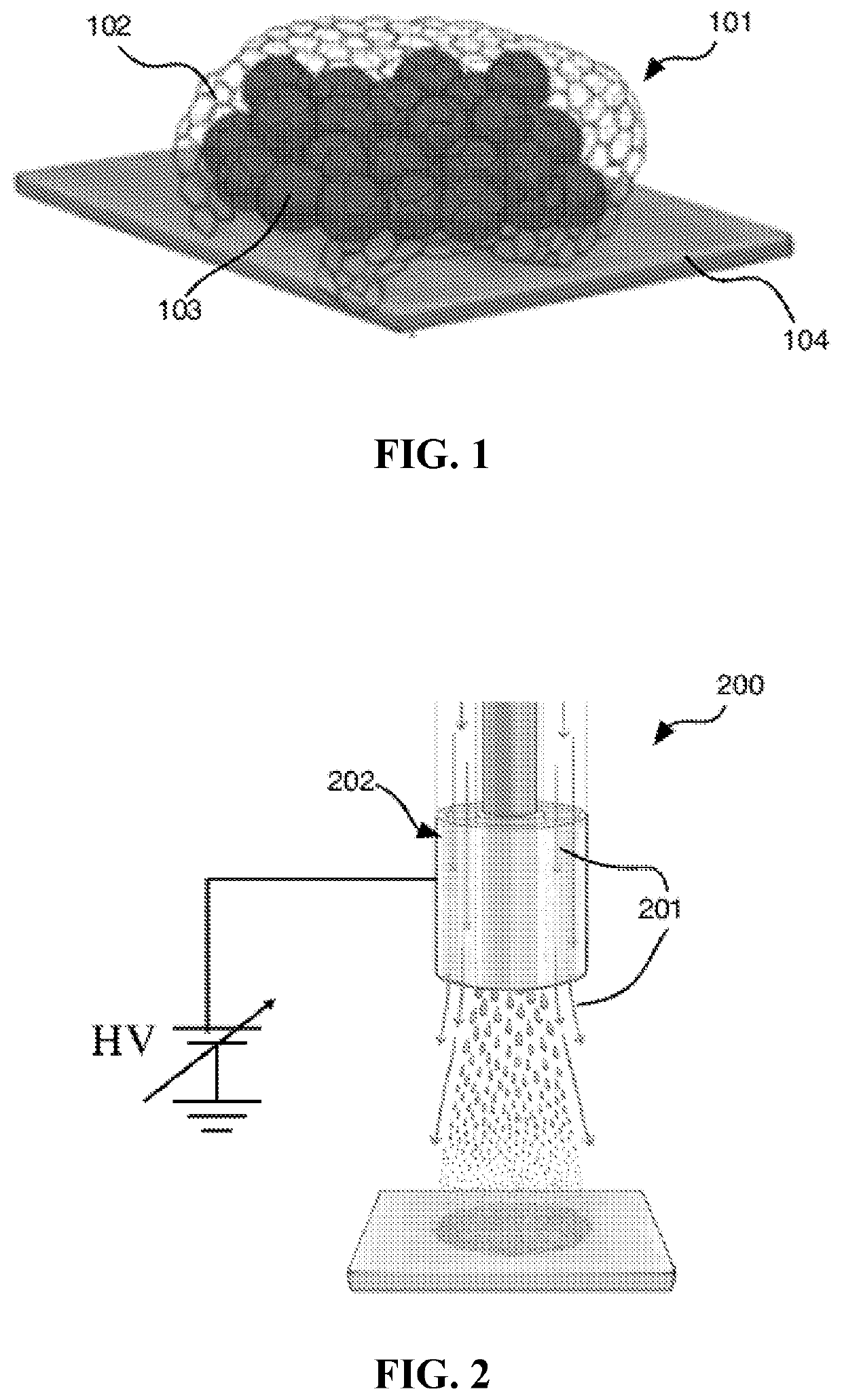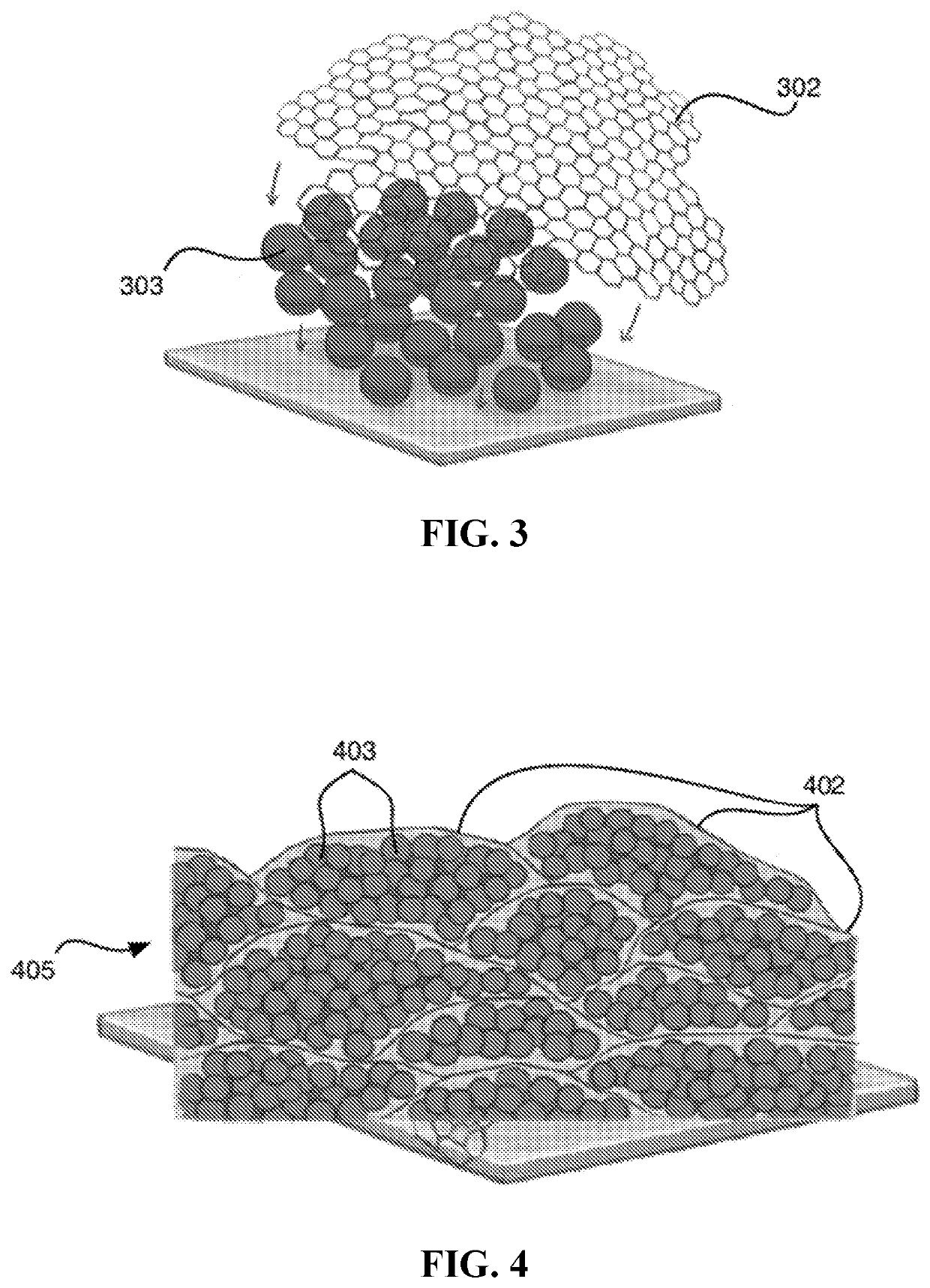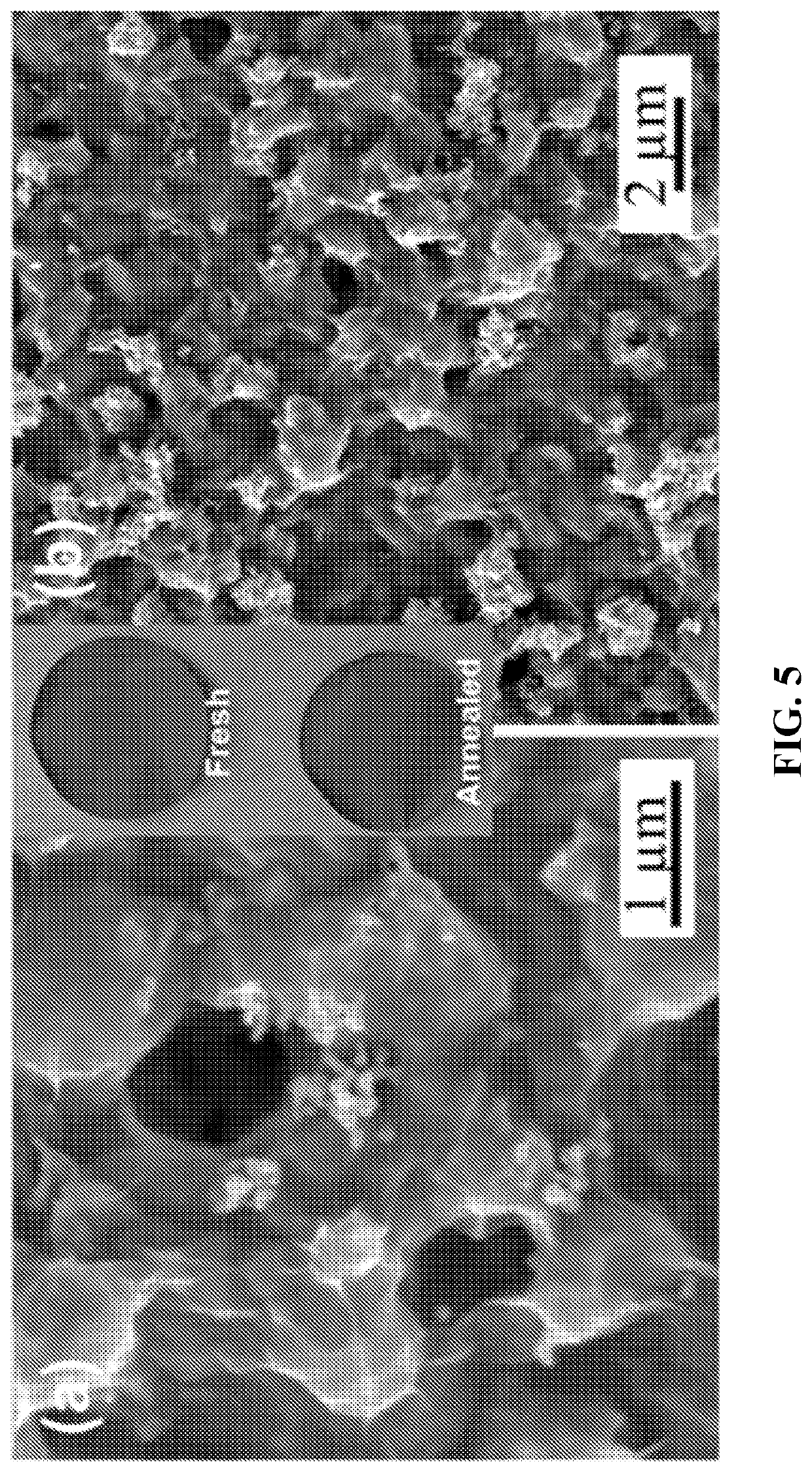Multi-layered graphene electrodes, materials, and precursors thereof
a graphene electrode and electrode technology, applied in the field of electrodes, can solve the problems of insufficient capacity retention over many cycles, unscalable development, and inability to commercialize products and processes, and achieve the effects of high capacity retention, excellent results, and high capacity retention
- Summary
- Abstract
- Description
- Claims
- Application Information
AI Technical Summary
Benefits of technology
Problems solved by technology
Method used
Image
Examples
example 1
[0144]Various electrodes and electrode materials are prepared using active materials (silicon or a (substoichiometric) silicon oxide) particles. 3.0 g of GO aqueous suspension is diluted in 5.0 g of DI water. After sonicating the suspension for 1 hr, 60 mg or 120 mg active materials (1:1 or 2:1 weight ratio with graphene oxide) are added. The mixture of active material and graphene oxide are then sonicated for another hour and stirred overnight before spraying. Air-controlled electrospray is applied for manufacture of electrode materials, including directly depositing binder-free electrodes. The electrospray is carried out under ambient condition using a Harvard Apparatus PHD 2000 Infusion syringe pump with a coaxial needle set. Solution is supplied through the inner 17 G needle and gas through outer 12 G needle. The working voltage is set at 20 kV, working distance at 20 cm, solution feeding rate between 0.05 mL min−1-0.1 mL min−1, and gas pressure at 28 psi. To obtain active mater...
example 2
[0146]Using a process as described in Example 1, direct deposited anodes are prepared using active material particles in an initial in an initial particles:GO weight ratio of 4:3. Samples are prepared using both fully exfoliated, single-layer and multi-layered graphene oxide (GO).
[0147]Half cells are identically prepared using the single layer graphene oxide and three samples of multi-layered graphene oxide samples. FIG. 6 illustrates the capacities of the samples prepared using single layered (filled circles) and multi-layered graphene oxide (3×; triangles and open circles). The single layered graphene samples begin with the highest initial capacity of about 2500 mAh / g, with the multi-layered graphene samples having an initial capacity of about 2400 mAh / g. After several cycles, however, the multi-layered graphene samples exhibited capacities that were equivalent with or better than that of the single-layered graphene samples. These results indicate a much better capacity retention ...
example 3
[0149]Using a process similar to that described in Examples 1, cells using anodes prepared with natural flake graphite derived graphene oxide are prepared and compared to a the single-layered graphene samples described in Example 2. As is discussed in Example 2, cells using anodes with multi-layered graphene again demonstrated superiority over the single-layered graphene samples, even when sourcing the graphene oxide raw material from natural flake graphite, rather than synthetic sources (as used in the single and multi-layered graphene oxide samples of Example 2).
[0150]As illustrated in FIG. 11 and FIG. 12, better initial capacities (about 2500 mAh / g or more) are demonstrated for the natural flake graphite derived multi-layered graphene than for the synthetic graphite derived graphene of Example 2. Similarly, capacity retention values for the natural flake graphite derived multi-layered graphene (triangles and open circles) samples demonstrate consistent and clear separation from t...
PUM
| Property | Measurement | Unit |
|---|---|---|
| velocity | aaaaa | aaaaa |
| thickness | aaaaa | aaaaa |
| thickness | aaaaa | aaaaa |
Abstract
Description
Claims
Application Information
 Login to View More
Login to View More - R&D
- Intellectual Property
- Life Sciences
- Materials
- Tech Scout
- Unparalleled Data Quality
- Higher Quality Content
- 60% Fewer Hallucinations
Browse by: Latest US Patents, China's latest patents, Technical Efficacy Thesaurus, Application Domain, Technology Topic, Popular Technical Reports.
© 2025 PatSnap. All rights reserved.Legal|Privacy policy|Modern Slavery Act Transparency Statement|Sitemap|About US| Contact US: help@patsnap.com



